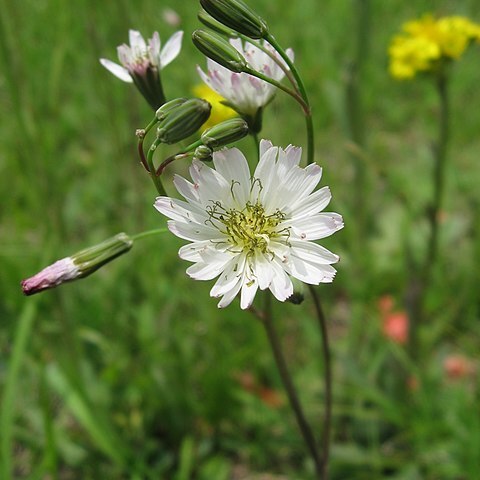Herbs 5-50 cm tall, perennial, rosulate, glabrous. Taproot, often with shoot-bearing lateral roots. Stems usually few to several, rarely solitary, ascending-erect to erect, branched from base or higher up. Rosette leaves oblanceolate, elliptic, narrowly elliptic, or ± linear, 6-24 × 1-2 cm, undivided or pinnatifid to pinnatipartite, basally attenuate, margin entire or sinuate-dentate, apex obtuse, acute, or attenuate; lateral lobes 2-7 pairs, narrowly triangular, linear-triangular, or linear. Stem leaves (0 or)1-4, narrowly lanceolate to linear-lanceolate, mostly undivided or more rarely pinnatifid, base semiamplexicaul and usually not or rarely with a basal pair of sideward directed clasping lobes, margin entire, apex acuminate. Synflorescence laxly corymbiform, with few to many capitula. Capitula with 15-25 florets; peduncle wiry, ca. 1 to several cm. Involucre cylindric, 6-11 mm. Phyllaries abaxially glabrous, apex acute; outer phyllaries ± ovate, longest 1-1.5 mm; inner phyllaries 8. Florets bright yellow, pale yellow, white, or purplish. Anther tube and style greenish to blackish upon drying. Achene brown, subfusiform, 4-6 mm, apex attenuate into a slender 2.5-3 mm beak. Pappus ca. 5 mm. Fl. and fr. Jun-Oct.
More
A low herb. It keeps growing from year to year. The stems are erect. They are 15-40 cm long. There are a few leaves on the lower part of the stem and these are 8-25 cm long by 0.5-2 cm wide. They narrow at the base into the leaf stalk that has wings. The higher leaves are small and like bracts. They are 1-3 mm long. There are several flower heads. They are white and yellow.

